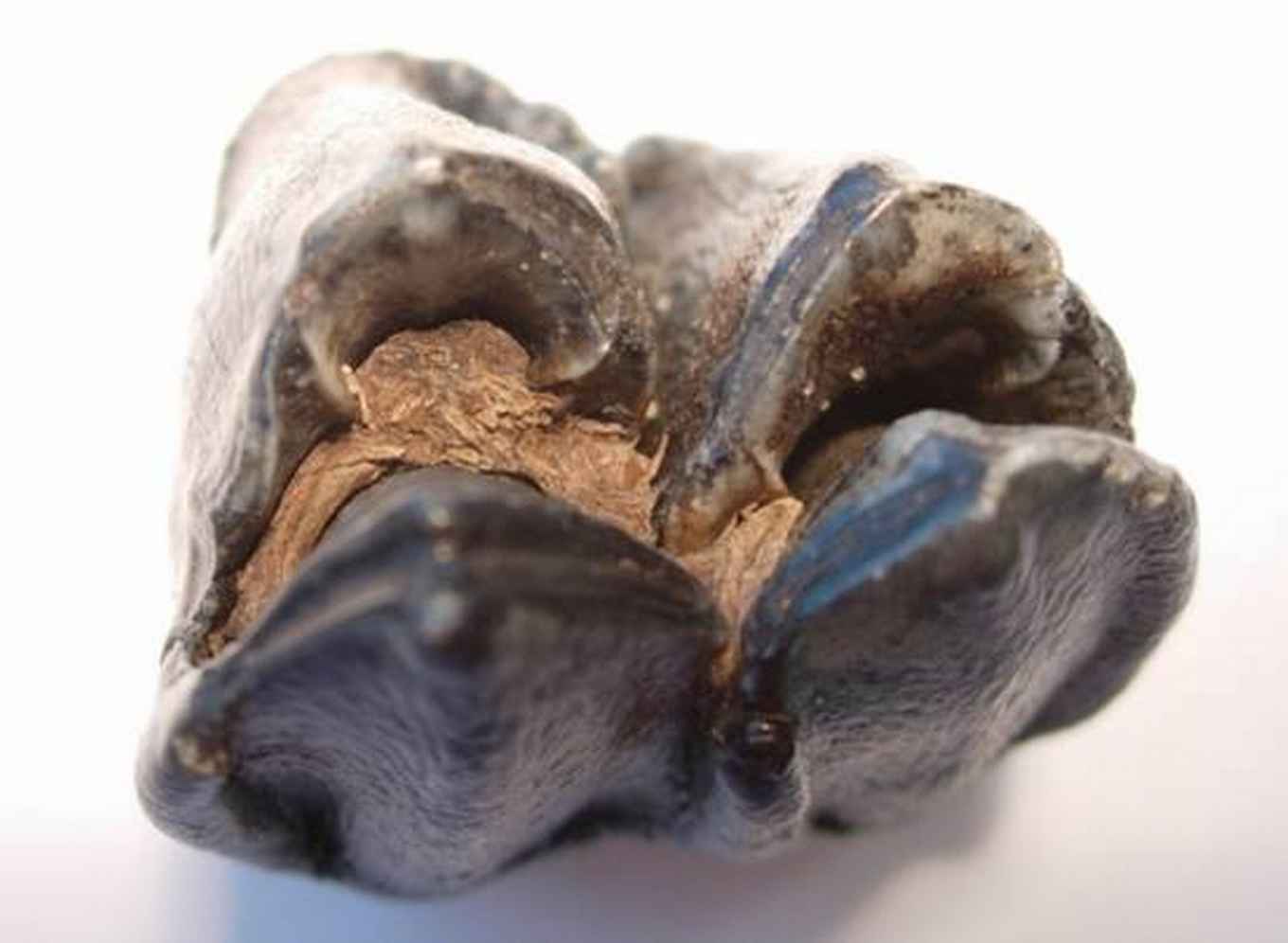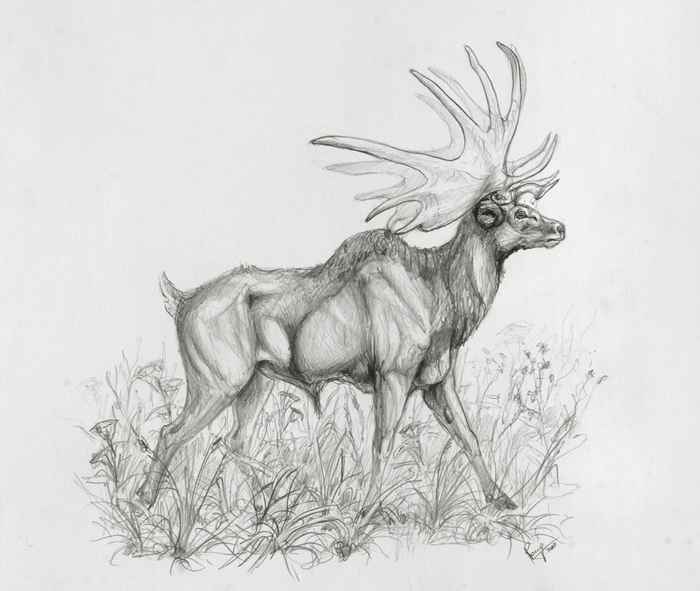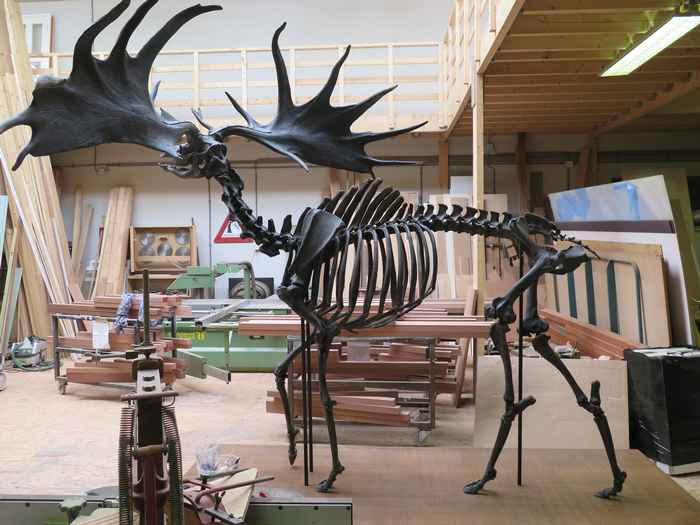Molar of extinct giant deer reveals dietary preferences
8 October 2018

The giant deer (Megaloceros giganteus), with its enormous antlers, is one of several large herbivores that became extinct at the end of the last Ice Age, about 11,000 years ago. By studying the diets of these large herbivore species more information can be collected on the environmental conditions (climate, soils, vegetation) that caused these extinctions.
Plant remains in giant deer molar
The researchers discovered the giant deer molar in sandy deposits of the North Sea, dredged about 10 km west of the present shoreline. Compacted plant remains, including pollen grains, were preserved in the molar’s deep folds. The plant remains were dated ca. 42,500 years ago, during the last Ice Age. At that time most of the North Sea was dry land because enormous quantities of water were present on land as ice sheets.

The published research is the first study about the food choice of giant deer based on pollen. ‘The preservation of pollen grains appeared to be so good that pollen identifications were possible. Observed lumps of unripe pollen grains show that flowering Artemisia plants were consumed,’ says first author Bas van Geel, paleoecologist at the UvA Institute for Biodiversity and Ecosystem Dynamics.
Fossil pollen analysis
The analysis of fossil pollen grains present in the folds of the molar shows the complete dominance of sage (Artemisia) and other Compositae, indicating that the giant deer foraged in a steppe environment. Giant deer may have preferred to eat sage, which contains a high level of nutrients such as calcium and phosphorous components, that were important for building the enormous antlers.

‘We hypothesize that changing soil conditions after the last Ice Age caused changing competition between plant species and reduced availability of mineral nutrients after a change in the species composition of the vegetation. The male giant deer had to build up enormous antlers every year and the intake of calcium-rich plants was very important. Mineral nutrient stress probably was a major factor in the extinction of giant deer,’ concludes Van Geel.
Publication details
van Geel, B., Sevink, J., Mol, D., Langeveld, B.W., van der Ham, R.W.J.M., van der Kraan, C.J.M., van der Plicht, J., Haile, J.S., Rey-Iglesia, A., Lorenzen, E.D., 2018. Giant deer (Megaloceros giganteus) diet from Mid-Weichselian deposits under the present North Sea inferred from molar-embedded botanical remains. Journal of Quaternary Science. https://doi.org/10.1002/jqs.3069